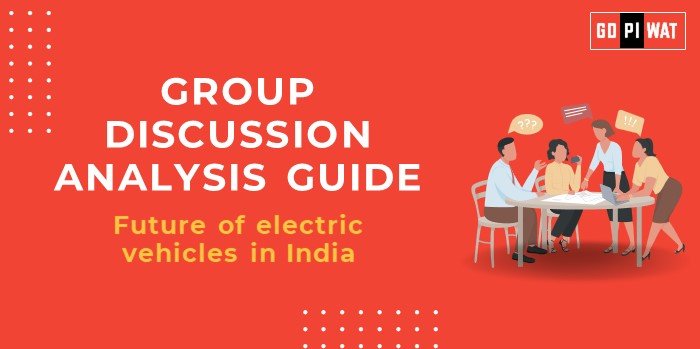🚗 Future of Electric Vehicles in India
🌟 Introduction to Future of Electric Vehicles in India
🌐 Context Setting:
Electric vehicles (EVs) represent a critical shift in transportation, fueled by global climate concerns and the need for sustainable energy solutions. As one of the world’s largest automotive markets, India’s focus on EV adoption aligns with its commitment to environmental sustainability and technological advancement.
📖 Topic Background:
EVs are pivotal in addressing urban pollution, enhancing energy independence, and reducing emissions. Through initiatives like FAME (Faster Adoption and Manufacturing of Electric Vehicles), the Government of India has accelerated the growth of the EV sector. The influx of both domestic and foreign EV manufacturers further underscores India’s transition toward sustainable mobility.
📊 Quick Facts and Key Statistics
- 🌍 Global EV Market Growth: In 2023, the global EV market was valued at USD 255.54 billion. This market is projected to grow significantly, reaching approximately USD 2,108.80 billion by 2033, with a CAGR of 23.42% from 2024 to 2033.
- 📈 India’s EV Sales Surge: In May 2024, EV sales in India surged by 20.88%, totaling 1.39 million units. In 2023, EV sales saw an impressive 49.25% year-over-year growth.
- 💰 Projected Indian EV Market Value: India’s EV market is set to expand from USD 3.21 billion in 2022 to USD 113.99 billion by 2029, representing a robust CAGR of 66.52%.
- 🔋 Indian EV Battery Market Expansion: India’s EV battery market is projected to grow from USD 16.77 billion in 2023 to USD 27.70 billion by 2028.
- ⚡ Infrastructure Growth: As of February 2024, India has over 12,146 public EV charging stations, with projections indicating a need for 1.32 million by 2030.
🎯 Stakeholders and Their Roles
- 🏛️ Government of India: Policy development, subsidies, and regulatory frameworks.
- 🚗 Automobile Manufacturers: Innovation and manufacturing of affordable EV models.
- 🔌 Energy Providers and Infrastructure Developers: Charging station expansion and sustainable power supply.
🏆 Achievements and Challenges
✔️ Achievements:
- 📜 Policy Support: FAME II scheme providing subsidies and boosting EV manufacturing.
- 📈 Sales Growth: Nearly 1.52 million EVs sold in 2023, marking a 49.25% increase from 2022.
- 🌍 Energy Independence: EVs reduce dependency on imported fossil fuels.
⚠️ Challenges:
- 🔌 Infrastructure: Limited availability of charging stations, especially outside major urban areas.
- 💵 High Costs: Initial EV purchase costs remain high despite subsidies.
🌏 Global Comparisons:
- 🇨🇳 China: Leads in EV adoption, supported by comprehensive infrastructure and policy support.
- 🇳🇴 Norway: High EV penetration due to extensive government incentives and infrastructure.
🔍 Structured Arguments for Discussion
- 👍 Supporting Stance: “EV adoption in India promises a cleaner environment, energy independence, and job creation.”
- 👎 Opposing Stance: “High EV costs and insufficient infrastructure present challenges to widespread adoption.”
- ⚖️ Balanced Perspective: “India’s EV sector shows promise, but addressing infrastructure and cost barriers is essential for growth.”
💡 Effective Discussion Approaches
- 📊 Data-Driven Start: “India’s EV sales grew by 49.25% in 2023, showing rapid progress in sustainable mobility.”
- 🛠️ Problem-Solution Approach: “While EVs can combat pollution, the lack of charging stations is a major barrier.”
- 🎯 Counter-Argument Handling: Emphasize economic and environmental benefits, backed by statistics on reduced emissions and oil import savings.
🔎 Strategic Analysis of Strengths and Weaknesses
- ✔️ Strengths: Environmental benefits, energy security, and market growth potential.
- ❌ Weaknesses: High costs, infrastructure limitations, and reliance on imported components.
- 🌟 Opportunities: Advances in battery technology, local manufacturing, and increasing consumer interest.
- ⚠️ Threats: Supply chain dependencies, high production costs, and competition with fossil-fuel vehicles.
🎓 Connecting with B-School Applications
- 🌍 Real-World Applications: EV projects related to supply chain, finance, and market expansion.
- ❓ Sample Interview Questions:
- “What are the major challenges to EV adoption in India?”
- “How can India improve EV infrastructure to meet 2030 targets?”


